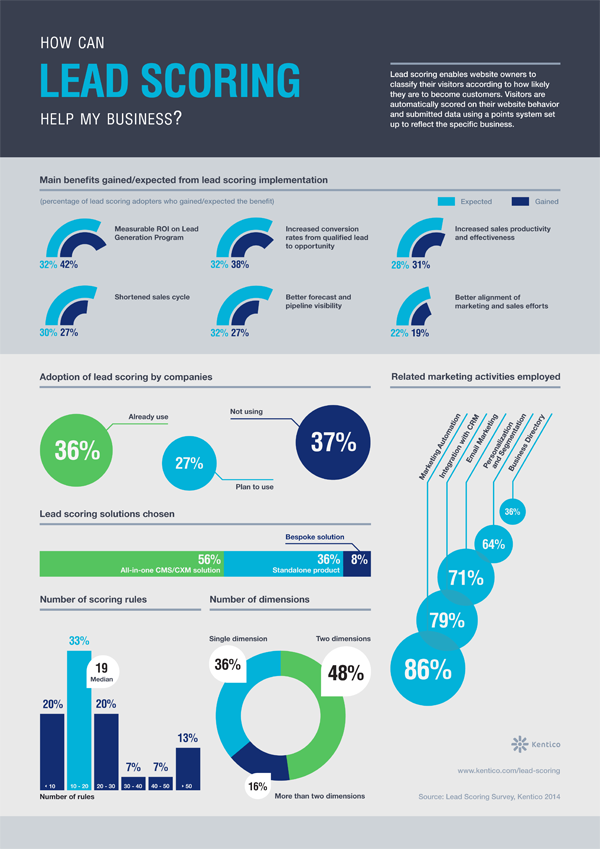What’s the REAL VALUE of Lead Scoring for Your Business [infographics by Kentico].
In their pitch for lead scoring, sales people will name dozens of reasons why its adoption is crucial for your business. But you know that the proof is in the pudding. So let’s see what those already using it have to say. What benefits have they really gained? We have tried to verify the real business impact of
lead scoring by surveying those who already use it on their websites.
We asked website owners currently employing lead scoring what the
main benefits gained were, and we compared them to their expectations.
• 42% named measurable ROI on their lead generation program as a main benefit. (This benefit exceeded expectations as only 32% of adopters had expected it).
• 38% named increased conversion rates of qualified leads to opportunities. (Exceeding the expectations as only 32% of adopters had expected it).
• 31% named increased sales productivity and effectiveness. (Another benefit that exceeded expectations as 28% of adopters had expected it).
• 27% named shortened sales cycle. (Something 30% of adopters were expecting).
• 27% named better forecast and pipeline visibility. (Expected by 32% of adopters).
• 19% named the better alignment of marketing and sales efforts. (A benefit expected by 22% of adopters).
The primary use of
lead scoring is to identify leads with the highest sales readiness. However the survey showed that lead scoring is very often
used together with related marketing tools to enable advanced marketing scenarios.
Current adopters use lead scoring with:
• 79% Integration with CRM, such as Salesforce
• 36% Business directory/database such as Data.com to gather more details on leads
These results show why having your lead scoring tool fully integrated or even as a built-in part of your marketing solution enables highly connected and sophisticated digital marketing activities. 56% of our adopters implemented lead scoring using the built-in lead scoring capabilities of their CMS or CXM on which their website is built. 36% chose a standalone product, and then integrated it with their website. And just 8% used a bespoke solution.
After a deeper look, we see that the majority of adopters (48%) use two-dimensional lead scoring (combining visitor engagement with data profile) to measure sales readiness. 16% of businesses benefit from having more than 2 dimensions, while 36% get along with just one scale. As for number of rules used, 73% of adopters use fewer than 30 rules, 19 being the median of lead scoring rules used.
